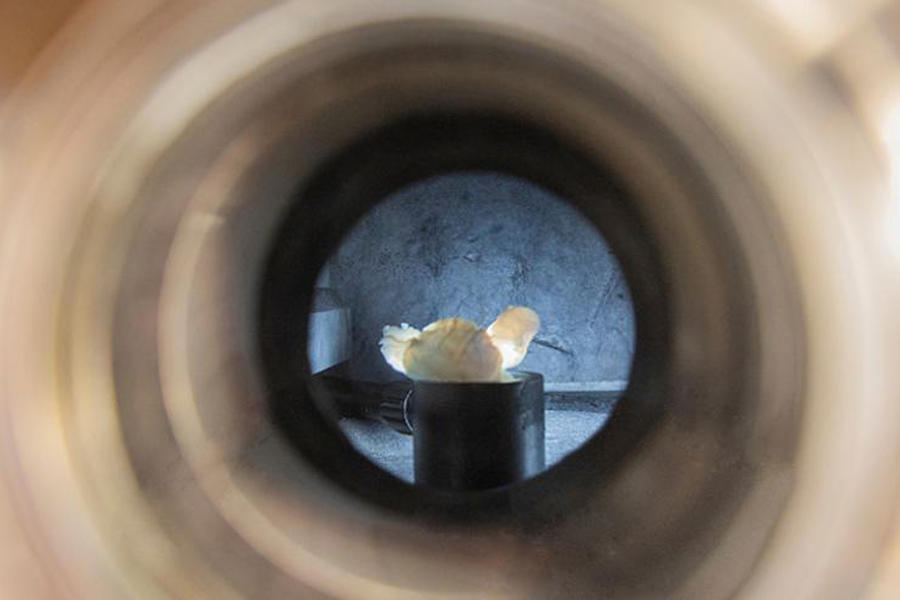The research team, led by Assistant Professor in Industrial and Manufacturing Engineering Rebekah Sweat, completed the first-ever study on how purified boron nitride nanotubes remain stable in extreme temperatures in inert environments.
Their work was published in the journal Applied Nano Materials.
Boron nitride nanotubes, or BNNTs, are stronger and more resistant to high temperatures than carbon nanotubes. Like their carbon cousins, they are structures measured by the nanometer — a length equal to one-billionth of a meter.
But manufacturing these materials is challenging. Current methods for BNNTs are newer and do not yet produce the same quantities as methods devised for carbon nanotubes. That’s why learning more about how they function is important.
The researchers found that BNNTs are fully stable at up to 1800°C in an inert environment, the chemically inactive atmosphere in which they are manufactured. They also learned that BNNTs can withstand temperatures at 2200°C for short periods without losing the mechanical properties that make them so effective.
“This research is about uncovering a property that is incredibly useful for the future,” Sweat said. “We have a more robust knowledge of how BNNTs perform when and how they thermally fail – because all materials do have limitations. We have changed how we make these types of composites to better utilize their properties.”
Potential applications for these light, strong composite materials are numerous. Anything that gets hot, like a turbine or engine, might use them to function in a high-temperature environment. They are thermally conducting, which means they spread heat out quickly, and their mechanical stability offers structural reinforcement.
BNNTs show particular promise for their use in space exploration. Their ability to conduct heat, insulate electrical current and block radiation could be used in space rovers or a spacecraft during reentry to Earth’s atmosphere. Those same properties also make them useful for high-performance electronics.
“Understanding the behavior of these nanotubes at high temperatures is crucial for creating materials that can withstand extreme conditions, both in manufacturing and in their final use,” said lead author and doctoral student Mehul Tank. “As we understand better how they function in these conditions, we’ll be able to develop better manufacturing of composites that employ high-temperature processing matrices, like ceramics and metals.”
This work was partially funded by a grant earned from FSU’s GAP Commercialization Investment Program, an event organized by the Office of Commercialization to help transform academic research into potential commercial projects. The funding that Sweat received in 2022 through the Office of Commercialization’s competitive application process supported the phase of this work that uncovered the processing temperatures for BNNT-ceramic matrix composites that is the focus of the GAP project.
Along with the GAP funding, this study was also supported through a partnership with the Virginia-based company BNNT Materials. The company synthesizes BNNTs and worked with Florida State University researchers to uncover how the nanotubes survived high temperatures and how different chemistries will perform.
“GAP has helped my team explore new avenues and encouraged collaboration to move this work further,” Sweat said. “The application process and emphasis on translating research from the lab to materials that are relevant for industry helps focus our research on exciting emerging technologies.”
Researchers Aspen Reyes, Jin Gyu Park and Ana De Leon from the FAMU-FSU College of Engineering, and Lyndsey Scammell and Michael Smith from BNNT Materials contributed to this study.


